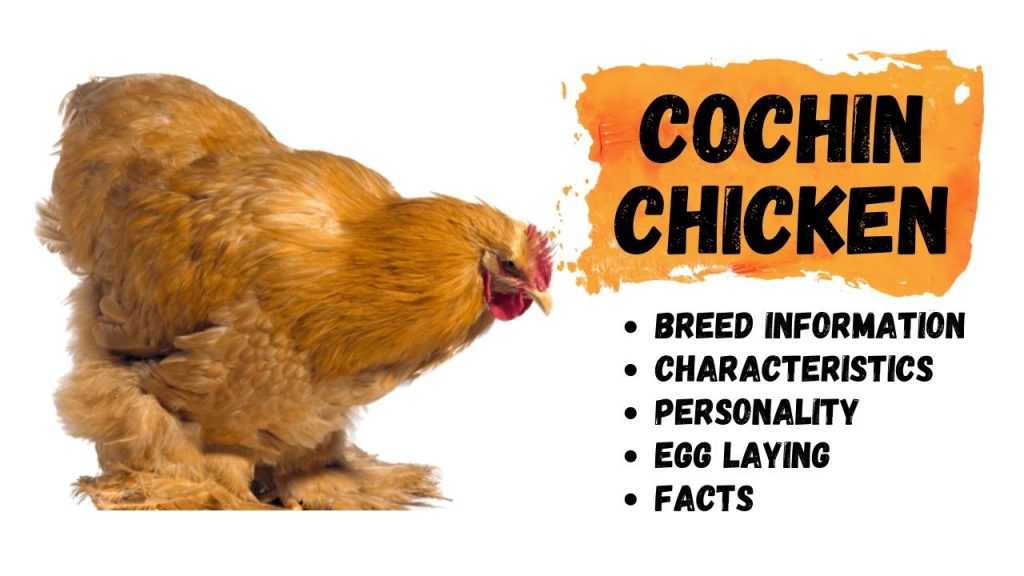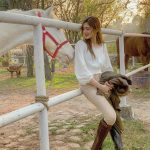
If you’re looking for a unique and unusual breed of chicken, Cochin may be right up your alley! Named after the port city of Kōchi in Japan where they first made their appearance in the 19th century, this sturdy yet fluffy bird has become increasingly popular as both an exhibition bird and a pet. Known for its elegant feathering, perseverance, good temperament, and hardiness in cold climates, raising Cochins is quickly becoming a favorite among chicken keepers around the world. Keep reading to learn more about this remarkable breed!
The Cochin chicken breed can be considered one of the cutest chickens of all time. They are big and fluffy that it is just so adorable to cuddle with them. For a long time, they have captured the attention of people. Their feathers cover their whole body – from head to toe. They are like sweet fluffy balls.
In this article, we will discuss all the important things that you need to know about Cochins including their history and origin, egg-laying capabilities, appearance, size and color, temperament, and how you could properly take care of them.
Origin of Cochin Chicken
It was in the 1840s when Cochins were first noticed. They were called the Cochins-China. However, they actually came from a French colony in Vietnam and not China. Furthermore, the original Cochins imported did not look anything like how they are now. They appear more similar to the Malays and Jungle Fowls. They were tall but not really pretty and attractive to the eyes.
This first version of the Cochin was given by Captain Edward Belcher to Queen Victoria. She loved these chickens. She built a special enclosure for these Cochin-Chinas. This started the hen fever during the Victorian era.
By the time that happened, a hen fever was already taking over in USA and UK. The dominant birds were Cochins and Brahmas.
The first versions of the Cochins were very productive in terms of laying eggs. However, people started to alter the breed in order for their appearance to look fancier and prettier. Because of that, the breed became poor in terms of egg-laying. Since then, they have only become ornamental birds.
Cochin Chicken Appearance
The Cochin breed has soft and fluffy feathers covering their entire body from head to toe. Because of that, they look like they don’t have feet, which are just actually covered underneath their fluffy feathers. Their legs and outer feathers are full of feathers. When viewed on their side, you cannot see the toes.
Because of the fluffiness, Cochins may start looking larger than what they actually are. But once fully grown, they can have a hefty size. A hen usually weighs about eight and a half pounds.
The Cochin has a single comb with five points. This comb, along with the ear lobes and wattles are all colored red. The Cochin has golden yellow eyes. The beak varies in color, from yellow to black to horn, depending on the color of the bird itself.
The toes, legs, and skin are all colored yellow. The legs and toes are fully feathered. Only the inner toe and some parts of the middle toe are visible. The tail of the Cochin is fully feathered.
Cochin ChickenSize and Color
Cochins grow slowly. It can take up to two full years for a chick Cochin to fully mature. Once, adult, Cochin males can weigh about 11 pounds while females weigh about eight and a half pounds. The bantam-sized Cochin rooster can weigh 30 oz. while a bantam-sized Cochin hen can weigh around 26 oz.
The officially recognized colors of Cochin vary between the UK and the USA. In the UK, the following colors are recognized: black, blue, buff, partridge, cuckoo, and white. On the other hand, the USA recognizes the following colors: brown, gold-laced, and silver laced.
Cochin Chicken Egg Laying
Cochins are not excellent in egg laying. They lay only 180 to 200 eggs per year. Opposite Brahmas, Cochin hens lay more eggs in winter. Their eggs are small to medium in size. They are colored brown. Cochin hens are good brooders. They will happily sit atop their eggs and will take care of their chicks after hatching. For better comfort, make sure to furnish your Cochins with reliable chicken coop bedding.
Cochin Chicken Temperament
Despite of their size, Cochins are calm and friendly birds. Even the rooster Cochin is mellow. They rarely get mean, aggressive, and quarrelsome. On the contrary, bantam-sized Cochin rooster can be a bit feisty and aggressive. They can be overly protective of their territory.
Since Cochins are poor flyers, it is easy to contain them well. Even just a two-foot fence will secure them in place.
Fortunately, Cochins tolerate confinement well. But they do enjoy free ranging. They can also be lazy at times and become obese because of being lethargic and having no exercise.
Should I Get a Cochin?
If you want a chicken that is dual-purpose, you should turn your head away from the Cochin. She is not a good egg layer and you will only become disappointed in that aspect. However, if you are looking for a pretty pet chicken that you can easily get along with, then consider having a Cochin.
If there are kids in your family, they will surely be delighted with having Cochins in your backyard coop. They can play with them and enjoy putting the chickens on their laps.
Conclusion
Overall, the Cochin is an outstanding chicken breed, which is why it is considered to be one of the top 20 chicken breeds. You have been given the most important things that you need to know about Cochins – including how the breed originated, its appearance, temperament, size and color, and egg-laying capabilities. The choice is up to you now to decide whether to get one for your coop or backyard. Whatever your decision may be, we wish you good luck in your chicken breeding journey!



